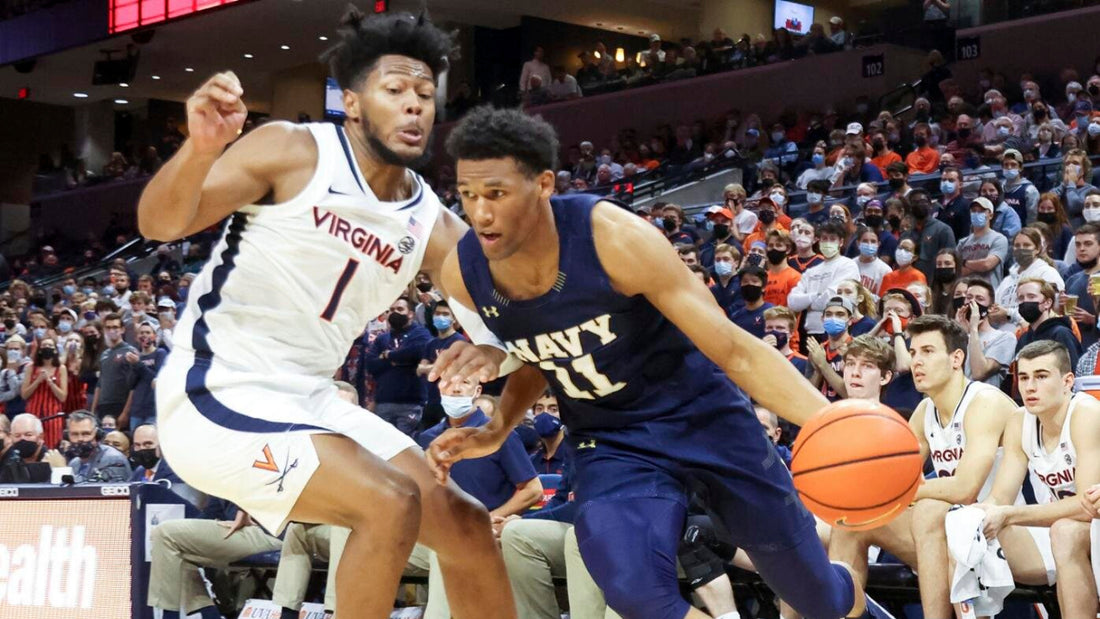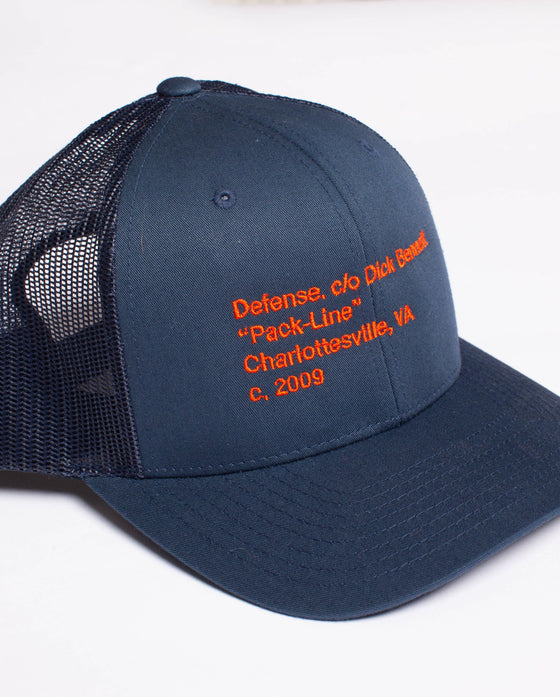Five reasons for excitement as Virginia enters ACC play

Tomorrow, Virginia basketball officially enters the heart of their season, tipping off ACC play against Pittsburgh at John Paul Jones Arena. After a potentially dangerous road game in front of a sold-out James Madison crowd and one final non-conference tune-up at home against Farleigh Dickinson, things really kick into high gear as the Hoos dive into conference play with just one home game in their first 23 days of the conference season.
This Virginia team has come out of the gates stumbling a bit, losing three of their first eight games for the first time in over a decade. However, despite a home loss to Iowa capping the bulk of their non-conference schedule, there have been glimmers of hope: they closed the Iowa game on a 50-31 run and saw their offense look the best it had all season in the second half as they came storming back.
Here are five positives I’ll be watching for as Virginia enters conference play this year. Some honorable mentions just missed the cut — Kadin Shedrick’s elite shot blocking, Reece Beekman’s pestering on-ball defense, Armaan Franklin’s off-ball movement — but I’ve narrowed my list down to a select list of things I’m extremely excited to watch going forward.
1. Witnessing the Taine Murray breakout season
Immediately after the best game of his young career, it’s become trendy to jump onto the Taine Murray hype train. After playing just 30 minutes in the first five games of the season, Murray saw 21 minutes against Iowa and poured in 14 points on 5-7 shooting (both career highs) and spearheaded a furious 20-point second-half comeback that ultimately fell just short. Full steam ahead!
Advanced statistics make the case for Taine to play a larger role in the rotation going forward, as he grades out as one of the team’s most threatening offensive pieces: his 121.2 offensive rating, 70.8 effective field goal percentage, and 67.0 true shooting percentage are all team highs, according to BartTorvik’s database. But you don’t need analytics to see why the freshman from New Zealand is so impactful.
Instead, just look at how much of a threat his shooting poses to opposing defenses. Taine has a very assertive offensive game — when he gets the ball, he’s going to make a quick decision with it. His decisiveness gave Iowa’s zone defense fits; as his confidence grew in the second half, so did his scoring ability.
Check out this sequence late in the game, where Tony Bennett decides to close the game with Taine on the floor. He goes on a personal 6-0 run, simply spotting up in the corner and waiting to receive the ball, then immediately elevating for what he knows is a good look from three. On the second three, two defenders close out on Taine, but it doesn’t matter: he knows there’s enough space to get his shot off, and when left open, he’s almost automatic (Taine’s missed just two triples this year).
Against the zone defense Iowa played, Taine was allowed to have a bit more offensive freedom than he did earlier in the season. Slotted in as a small-ball power forward, Taine had been asked to be one of the blockers in Virginia’s mover-blocker offense, which relegated him to setting screens and took the ball out of his hands. Back in more of his natural habitat as an off-ball wing instead of a small-ball four, Taine flashed big-time.
After putting on a clinic against Iowa, Taine is sure to see regular minutes as the team enters conference play for as long as his defense passes muster. If he can be an offensive sparkplug off the bench, it could be huge for Virginia’s ACC contention chances.
2. Watching Igor Milicic Jr. become a rotation piece
In coming up so clutch against Iowa, Taine stole some of the thunder of Virginia’s other true freshman, who had been showing out in his recent playing time: Igor Milicic Jr. While Igor barely saw the floor against Iowa, he’d received some heavier run in earlier games — most notably against Coppin State — and demonstrated potential to be a key rotation piece.
The case for Igor’s move into the regular rotation can be made solely based on his offensive potential. Listed at 6-10 on the official roster, he plays with fluidity and possesses guard skills off the dribble that look unnaturally good for someone of his height and length. Igor also has an incredibly pure set shooting form that looks automatic, though he is just 4-for-11 from three on the season.
Because of his physical gifts and offensive feel for the game, Igor can potentially pose a matchup problem for opposing defenses in a way that few players on this team can. If he comes into his own more as a scorer, Igor will be a legitimate threat from all three levels. Check out this out-of-bounds play — how many 6-10 guys can catch and shoot on the move like this?
For all his offensive upside, Igor is still adjusting to the team’s schemes and getting used to his role, which will cap his minutes in the Tony Bennett system.
His defensive rotations are still a step slow on occasion, though he’s looked good when occasionally asked to defend on the ball. Watch this play from that breakout Coppin State game, where he (#24) gets caught in no-man’s-land on the help side against a drive. Sure, he’s only out of place for a moment, but that moment is enough to allow an open catch-and-shoot corner 3 to the opponent.
Once Igor can iron out those defensive issues, though, there’s no reason to believe he can’t be a positive defender. He’s got plenty of length, and as long as the team doesn’t ask him to match up with guards, his foot speed is good enough to stay competitive. And if he can hang around on that end of the floor, he can begin to tap into his potential as a scoring threat on the other side of the ball.
3. Kihei Clark's continued growth as a shooter and scorer
Much ado was made this offseason over Kihei Clark and Reece Beekman working on their jump shots, as three NBA players departed the roster and left a shooting void. While Reece’s growth from three hasn’t quite borne itself out on the court yet, the same cannot be said for Kihei. The polarizing fourth-year point guard has come out firing more than ever from beyond the arc with surprisingly good results so far.
Kihei’s attempted 33 threes this season, his most ever through six games by far, and knocked down 14. That rate is good for a 42.4% clip — fourth among the 13 players who have attempted that many triples. He’s on pace to set career highs in both attempts from beyond the arc and shooting percentages.
Another encouraging sign? Kihei’s willingness to shoot off the dribble. While he’s kept this mostly inside the arc thus far, knocking down just two unassisted threes per game, the undersized guard’s increased willingness to pull up for jump shots when he forces favorable switches is encouraging for the team going forward.
Kihei’s already knocked down half as many three-pointers off the dribble than he did all of last season. His isolation game taking a step forward will be key in late-game situations, where Tony seems to be most comfortable with the ball in his veteran point guard’s hands.
There’s still some progress to be made. Kihei probably still isn’t taking as many threes as he could be, and the angst in the crowd at John Paul Jones Arena is audible when he passes up a semi-open three to passively drive and kick the ball out. But there are still reasons to be optimistic that the veteran point guard can effectively run the show in ACC play. He got those preseason All-ACC First Team votes for a reason.
4. The team's defense coming together as a unit
It was no secret entering the season that Virginia’s defense would take a little while to come around to Tony Bennett’s usual standards. In the brave new world of college basketball where transfers are immediately eligible to play, the Hoos have been giving heavy minutes to two players with very little pack line experience in Jayden Gardner and Armaan Franklin.
This year’s team is also extremely fresh. With the exceptions of Kihei Clark and Reece Beekman, they returned almost zero minutes played from last season. Freshmen Taine Murray and Igor Milicic Jr. have also seen playing time, and they’ve been figuring out the defensive scheme on the fly.
As a result of all these factors, the defense lacks its usual cohesiveness through six games, and the team has gone through some growing pains. If the season ended today, Virginia would rank 38th in KenPom’s adjusted defensive efficiency. In a vacuum, of course, that’s a very good performance out of 358 teams — but Tony Bennett teams don’t get graded in a vacuum on their defensive performance. 38th place would be the worst defensive performance by a Virginia team since the 2010-11 season, where the team barely finished above .500 at 16-15.
There have been bright spots on defense. Kadin Shedrick’s shot blocking and rim protection has been a revelation thus far, as has Reece Beekman’s on-ball defense. However, the team is still learning how to play cohesively on that end of the floor, and that lack of experience has shown itself on occasion.
Check out this play from the end of the Iowa game, where those two standout defenders — Beekman and Shedrick — are asked to defend a pick-and-roll together.
Iowa guard Joe Toussaint gets Reece on his hip going to the outside, which is okay in the pack line; that’s where you’re supposed to funnel your man. However, once Reece recovers, he drops back to take away the pocket pass to Iowa’s big man Filip Rebraca. This would be okay — as a matter of fact, Beekman’s opportunistic passing-lane play is part of why he’s recorded so many steals this season — if Shedrick hadn’t also dropped into the lane with Rebraca. As a result, Toussaint is left open for a midrange bank shot that’s basically automatic at this level.
There’s no point in assigning individual blame on this play; we don’t know what the points of emphasis were in the huddle. The point, though, is that even good individual defenders take time playing together to develop chemistry, and this Virginia team simply hasn’t played that much basketball together.
Hopefully, this Virginia team can continue to grow on that end of the floor throughout conference play. They certainly have in the past, and they have plenty of individually talented defenders on this roster. It won’t be surprising at all if the Hoos round into form and have a top defense in the ACC yet again.
5. The ACC isn't very good, and Virginia should be a league contender
Finding nits to pick for pessimistic Virginia fans hasn’t been difficult this season. The team’s 5-3 start is their worst record through eight games in over a decade — and the last team to start that poorly, in 2010-11, bowed out in the first round of the ACC tournament and failed to qualify for the NCAA tournament.
The good news, though, as they head into ACC play? The rest of the ACC isn’t very good either.
Duke looks like the only bona fide elite team in the conference, with a stacked roster full of NBA talent including top-five pick Paolo Banchero and potential first-round selections Wendell Moore, Trevor Keels, and Mark Williams, though their recent implosion against an unranked Ohio State team was nothing to write home about.
Beyond that, there aren’t any teams that are even guaranteed to be ranked by season’s end. Florida State will figure it out as players return from injury, but they were drubbed by an elite Purdue team 93-65. Virginia Tech has Keve Aluma — but they also have losses to two of the three top-100-Kenpom teams they’ve faced, with their lone victory eked out against Maryland in a game where Virginia fans wanted both teams to lose.
Virginia’s mired in the group behind those teams at the moment, along with North Carolina, Louisville, and Notre Dame. However, if you buy into the defensive chemistry developing throughout the season, and talk yourself into the offense sorting itself out as players like Taine and Igor receive expanded offensive roles, it’s not hard to convince yourself that Virginia could punch above their weight and finish near the top of the ACC, even in a “retooling” season with a stacked recruiting class on the horizon.
First place might be a bridge too far, because Duke looks to be head and shoulders above the rest of the ACC at this juncture. But in the second tier of the league? That’s probably the upper limit for what this team can achieve — following in the spiritual footsteps of the 2019-20 squad, which struggled to start the season but ultimately came together as the year went on and finished the season on an 11-1 run in conference play.
If nothing else, the rest of the ACC is weak enough that Virginia should be able to stay competitive even if they continue to experience growing pains. And despite a slow start, it’s definitely not soon enough to close the book on this iteration of the Hoos.


